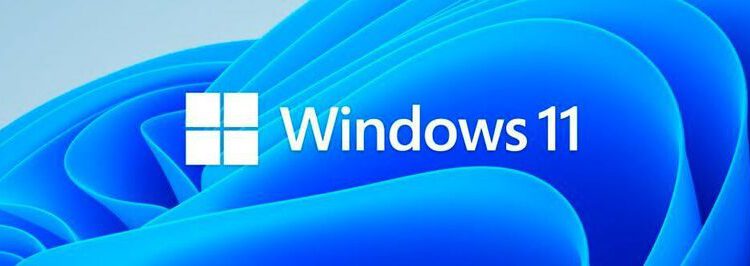Package Manager, UI Design, Game Stack and more Windows 11 offers a lot of new things for developers
Windows 11 is here – and Microsoft is betting on the developer scene as rarely before. A whole range of new or significantly optimized features are waiting to be tried out.
Related companies
Under the modern interface of Windows 11, some useful innovations for developers are hidden.
(Image: Microsoft)
Microsoft Windows is still the most widely used desktop operating system in the world. Android has now surpassed Windows in market share. Nevertheless, software developers who want to appeal to a large number of users can hardly get past Windows.
With Windows 11 there is a new major version since the beginning of October 2021. However, as with any major version change, developers have to deal with the changes that occur during software development. These concern both the available tools and the interfaces for developing for Windows 11.
Practical innovations
First, a look at the improvements to the Windows environment for developers: Probably the most important innovation is the Windows Subsystem for Linux (WSL) 2. The Linux environment integrated into Windows now also supports GUI applications under Linux, and a complete Linux kernel is finally integrated.
Like the first version of the Windows subsystem for Linux, the WSL 2 integrates seamlessly into the Windows environment. In many cases, software developers can run their favorite tools for Linux directly under Windows and do not have to deal with virtualization software, dual boot or comparable solutions.
Package Manager and more
Fittingly, with the new Windows terminal and the package manager Winget, there are two practical tools to use Unix-style Windows as well. Incidentally, the Microsoft store has also been completely redesigned, which now serves more as a package manager with GUI.
Microsoft now allows the integration of any app, also because Microsoft’s proprietary MSIX is no longer required. For developers, this means that they will be able to offer their apps, programs and even Progressive Web Apps (PWAs) in the Microsoft Store without any changes in the future.
Observe visual changes to the operating system
Probably the most obvious change in Windows 11 is the much more modern user interface. In the development of the new operating system, there are therefore a whole series of new design principles on the part of Microsoft. In apps, Microsoft wants a modern, accessible design, rounded corners, a new color scheme and a night mode.
As always with Windows, this is more freestyle than mandatory; nevertheless, it makes sense to take a look at the app design guideline in order to visually adapt apps to the new Microsoft operating system in the future and to ensure the best possible user experience for the user.
Of course, software developers can continue to bake their own design rolls, but in case of doubt, they have to live with the fact that the interface does not look very attractive to users. However, a compatibility test for Windows 11 is useful anyway for any software that should run on the system.
In the future, the Windows UI library WinUI 3, which is part of the current Windows app SDK, can also help with the adaptation. This has also been overhauled as part of the former “Project Reunion” and already has ready-made Windows 11 templates for desktop and portable apps: developers who use these templates can easily make sure that their apps are completely in the Windows 11 style.
News for game developers
Game developers can also benefit from Windows 11. The new Game stack is part of the Game Development Kit from Microsoft. This is a merging of various in-house and third-party services into an ecosystem for game development.
The linchpin is Microsoft’s Azure platform, which provides a backend service for games under the new name PlayFab. PlayFab includes, for example, communication and team functions, real-time push and the secure exchange of user-generated game content. Game Stack also includes new SDKs for developing XBox Live content on other platforms such as iOS and Android.
Many small innovations for developers
In addition to these “big” changes, there are a whole series of minor improvements for software developers on Windows 11: hundreds of new APIs have been added to the WinRT reference, the Win32 API has also been added.
Other innovations include Windows interfaces for the Bluetooth function, telephony, haptic feedback for input pens or firewall and VPN optimizations. Also interesting are the optimizations of Microsoft’s DirectX graphics interface and the completely new rapid storage technology, which should significantly speed up the data transport between the disk and the GPU.
Windows is the center of an ecosystem
In addition to all the innovations, Microsoft is also making a logistical change: Windows 11 should again become the fulcrum for developers and the center of an entire ecosystem. Microsoft has understood that it makes sense to lure software developers to their own pots and keep them there. Windows 11 is therefore designed from the ground up to be particularly developer–friendly and – by Windows standards – very open.
By doing so, Microsoft also wants to counteract the growing competition of large service providers such as Google or Amazon. Probably the most important step on this path is in fact the completely redesigned Windows Store: in the future, it will allow all software developers to smoothly offer software here – namely the “regular” version without functional restrictions, as has been the case so far
Microsoft is thus clearly turning away from the argument of the app store as a security guarantee established by Apple and Google (and no longer valid for a long time). Instead of form constraints and a review process, the new store is a kind of package manager with GUI and offers possibilities for simple, central distribution. In addition to developers, Windows users and, last but not least, Microsoft also benefit from this.








